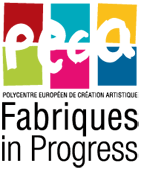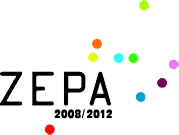The network was set up in 1996 through a first programme, Art’Urb (1997 to 2000) as a result of the bond and exchanges developed between the festivals Viva Cité (in Sotteville-lès-Rouen), La Fête dans la Ville (in Amiens) and the Streets of Brighton (in England).
 In 2000, the network project became PECA – European Polycentre of Artistic Creation – and specialised in the development of street arts creation spaces, with the opening of l’Atelier 231 (in Sotteville-lès-Rouen), and Le Hangar (in Amiens) and with new partners joining in : Culture Commune in Loos-en-Gohelle, the towns of Hastings and Rother in England.
In 2000, the network project became PECA – European Polycentre of Artistic Creation – and specialised in the development of street arts creation spaces, with the opening of l’Atelier 231 (in Sotteville-lès-Rouen), and Le Hangar (in Amiens) and with new partners joining in : Culture Commune in Loos-en-Gohelle, the towns of Hastings and Rother in England.
The PECA partners’ project was then to develop and professionalise street arts on their territories, as a significant and integral part of urban regeneration, taking into consideration the spaces dedicated to residencies and art creation as appreciable means to boost territorial development, at the junction of cultural, social and economic objectives.
The PECA project enabled the partners’ organisations to broaden their artistic and cultural spheres of activity, while being part of the implementation of world-class projects. It also allowed them to reinforce their creation spaces in terms of equipment, and to share good practice on project development and delivery.
In 2008, PECA became ZEPA. The partners are now : L’Atelier 231 – National Street-Arts Creation Centre / Sotteville-lès-Rouen, Le Hangar – Street-Arts Centre / Amiens, Culture Commune – National Centre in the mining Pas-de-Calais region / Loos-en-Gohelle, Le Fourneau - National Street-Arts Creation Centre / Brest, Zap’Art / Brighton, Brighton Dome & Festival / Brighton, Hat Fair / Winchester, Southampton City Council with the Nuffield Theatre, SeaChange Arts / Great Yarmouth.



